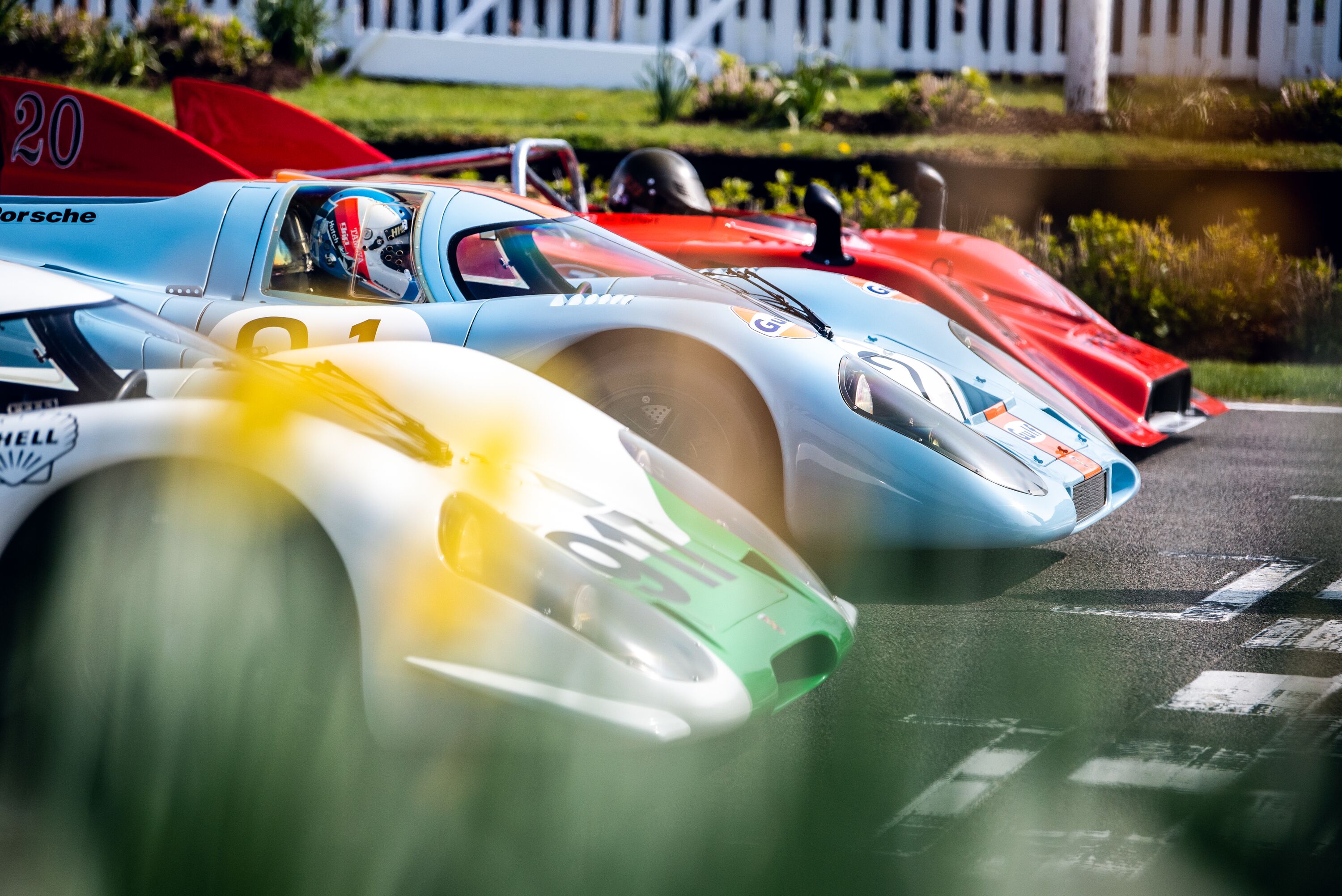This race at AVUS was one of the most remarkable ever
There have been few race tracks, if any, more fearsome than the Automobil-Verkehrs-und Übungsstraße, a German autodrome that opened on 24th September 1921 and hosted some of history’s most remarkable motorsport events.

AVUS, as it would be known, was conceived in the early 1900s as a motorsport venue, but also as a testing venue for road cars. It incorporated two immensely long straights, joined at each end by hairpin turns, the Nordschleife and the Südschleife.
Development was delayed first by financial difficulties and then by World War I, before it was eventually completed ahead of a debut race meeting as part of the 1921 Internationale Automobil-Ausstellung (IAA).
In its original form, AVUS was a 12-mile-long ribbon where drivers would reach speeds of up to 100mph for minutes on end. It was only used as the venue for the German Grand Prix on one occasion, in 1959, but it was a regular feature on the Grand Prix calendar as a non-Championship event through the 1930s, attended by all of the world’s greatest drivers: the likes of the 5th Earl Howe, Hans Stuck, Achille Varzi, Luigi Fagioli and Tazio Nuvolari.
This era was part of the prologue of what would become modern Formula 1, the second chapter of Grand Prix racing that saw the formation of the European Drivers’ Championship that ran sporadically from 1931 until its liquidation in 1939. It’s a period of motorsport that will be showcased as part of Goodwood’s definitive celebration of 75 years of the F1 World Championship at the 2025 Festival of Speed presented by Mastercard.
Throughout those early years, AVUS earned a reputation as a hugely dangerous place to go motor racing, and yet the Avusrennen grew to become an incredibly popular event, with vast crowds lining the section of dual carriageway that made up the majority of the circuit.

But after a season on the sidelines in 1936 as Germany hosted the Olympics, motorsport returned to the Berlin venue in ’37 for a weekend that would be forever etched in history.
The circuit had undergone a number of developments during its hiatus, the most famous of which was perhaps the single most remarkable feature on any race track in the world: ‘The Wall of Death’.
The Northern hairpin had been reprofiled into a 43.6-degree banked turn that drivers would be enticed into taking flat out at more than 150mph. For context, the banking at Daytona reaches a maximum of 31 degrees. Most astonishing is that there was no safety barrier to contain the cars; get this corner wrong, and they would be flung over the top.
AVUS was by now the fastest race track in the world, even quicker than the likes of Indianapolis and Brooklands, and even race organisers in 1937 recognised that running a normal race on this extraordinary circuit would be irresponsible.
The banking, and large parts of the circuit, were surfaced with brick work, and there were question marks over whether the cars, and more importantly the tyres, would be able to handle extensive subjection to such taxing conditions at such high speeds.
With that in mind it was decided that the 1937 Avusrennen on 30th May would be split into three sections. Two seven-lap heats, with the top four finishers from each qualifying for an eight-lap final.
The four leading manufacturers in world motorsport were in attendance. The German giants of Auto Union and Mercedes-Benz, both funded by the German government at that time, had undertaken substantial testing of their machinery to maximise their chances of success in front of the expectant crowds of between 300,000 and 400,000 people, but Alfa Romeo, represented by Scuderia Ferrari, and Maserati were also out in force with four cars each.
As a non-Championship race, the event was run under Formula Libre regulations, which allowed for the Germans to run with their streamliners, reworked from speed record cars that would allow for the highest possible top speeds on the slightly shortened 11.9-mile loop.

In practice, Berndt Rosemeyer at the wheel of a 6.0-litre V16 Auto Union Type C set a lap with an average speed of 176.7mph, but it was Fagioli who set the fastest official lap time to qualify on pole position in his heat.
In straight competition, the Grand Prix cars from Alfa Romeo and Maserati stood no chance in the wake of the streamliners, who were lapping almost two minutes quicker. The battle at the front however was no less breathtaking, as Rudolf Carraciola in his Mercedes-Benz W125 streamliner made an astonishing move to take the lead at the Nordschleife.
He and Rosemeyer continued to battle side by side for the majority of the race, eventually finishing just 0.7 seconds apart as Rosemeyer, running on a meagre 13 cylinders, just lost out despite setting a record lap time, the fastest in a Formula race at that point at more than 171mph.
Heat two was less dramatic, but much faster than the opening race. Manfred von Brauchitsch took the win, but disaster was just barely avoided after László Hartmann’s Maserati 8CM came within inches of clearing the upper edge of the banking. It was a narrow escape, but unphased, the qualifying contenders lined up on the grid one more time for the final eight-lap race.
The decision to shorten each race had worked to some degree, but even with these shorter distances tyre life was still extremely limited. In the final race, Rosemeyer had to stop for a new set after just a single lap as the race ran at a scintillating pace. He visited the emergency pit that had been built at the Südschleife to ensure no-one was arriving at the banking with ruined rubber. Dick Seaman meanwhile was forced to make two tyre stops as he desperately tried to keep up with the leaders in his standard, non-streamliner spec W125 Mercedes.
Ernst Von Delius was perhaps the outstanding performer in this race, as he, also in a non-streamliner Auto Union, kept pace with Hermann Lang, although it was eventually Lang who took the chequered flag to take victory at AVUS.
At the time, the final was the fastest race in history, the winner finished with an average speed of almost 171mph, and remained so until the Monza 500 in 1958.
But the 1937 Avusrennen would turn out to be a unique spectacle in motorsport history; the world would never see another race like this. It didn’t take long in the aftermath of the 30th May meeting for AVUS to be considered too dangerous for top-level motorsport. The speeds that cars could reach had become too great, and even for the lenient health and safety standards of the 1930s, the risk of a major accident was simply too big to ignore.
Quite amazingly the circuit, albeit in a much diminished form from that of the Avusrennen in 1937, remained in regular use right up until its final hosting of a Porsche Carrera Cup race in 1998. Now it sits dormant, absorbed into the Bundesautobahn 115, where drivers every single day retrace the tyre tracks of motorsport’s early heroes.
Images courtesy of Getty Images.
Race
Historic
The Prologue
AVUS
Auto Union
Mercedes-Benz
Hermann Lang





